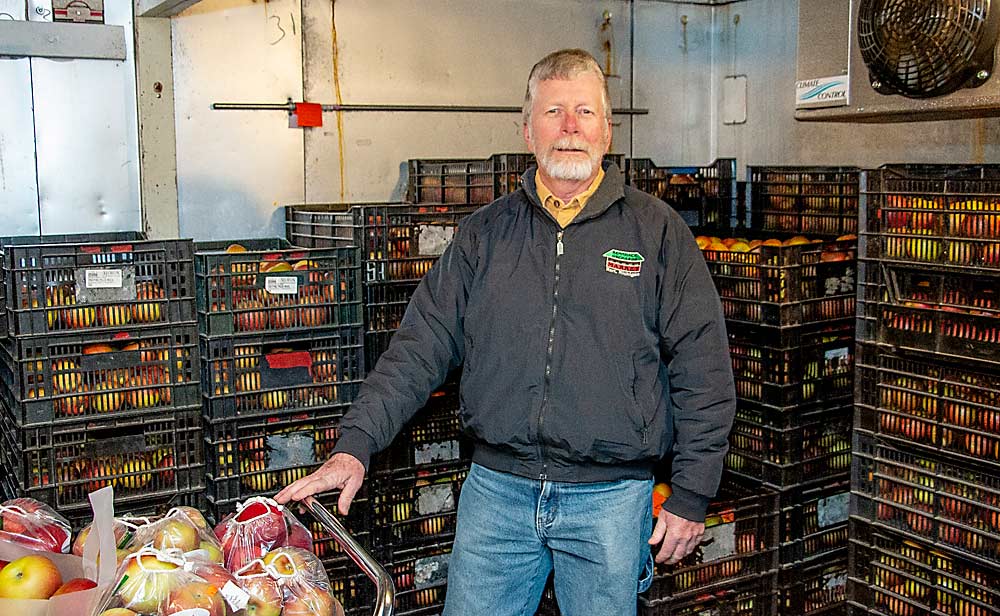
MAIA1, the apple marketed as EverCrisp, has the ability to be a top-selling variety, according to growers who know it well, thanks to its consistent flavor and tendency to keep well in storage.
The International Fruit Tree Association dedicated a panel to EverCrisp during its 66th annual meeting in Grand Rapids, Michigan, in February. Three Michigan growers talked about their experiences with the apple and sang the praises of its tremendous potential.
“It’s one of the best pieces of fruit I’ve ever seen in my life,” said Chris Kropf, an orchardist in the Grand Rapids region.
Bananas, grapes, berries and other items in the produce aisle offer consistent eating experiences, and EverCrisp can compete with any of them, Kropf said.
“It’s the most consistent apple I’ve ever seen,” he said. “And that message definitely needs to be delivered to retail.”
The Midwest Apple Improvement Association introduced EverCrisp, a Fuji/Honeycrisp cross, about a decade ago. By now, MAIA’s 1,100 members have planted more than 3 million MAIA1 trees, said Bill Pitts, a New York fruit consultant and the IFTA panel’s moderator.
Kropf planted his first block of MAIA1 in 2015, spaced 12 by 3 feet on Budagovsky 9. His newer plantings are spaced a little tighter at 11 by 2.5 feet. Growing on Bud.9, he has to be “super aggressive” the first few years, pushing the trees hard to fill space before they start producing fruit. He mounds his trees to boost vigor and nutrition levels, he said.
Farther north in West-central Michigan, Dave Rennhack planted his first block of MAIA1 trees in 2015 on Geneva 935. Since then, he’s planted them on G.11 and G.41. He likes G.41 best for its tree balance and fruit size.
EverCrisp is the third most popular apple at Rennhack’s farm market, after SweeTango and Honeycrisp, even though he doesn’t start selling it until the end of October. He stores it in his refrigerated cooler and sells it straight through the following summer, when it still has good flavor and crunch.
EverCrisp is a late-season apple, harvested in late October and early November in Michigan. Kropf would prefer to spot-pick the variety by color and stem-clip every apple, but late-season weather doesn’t always allow for such indulgences. Rennhack prefers multiple pickings, too. He picks the smaller fruit his second time through, which he sells to local schools. He saves his last picking for the processing market.
Southwest Michigan grower Trever Meachum planted his first commercial blocks of MAIA1 in 2020, after growing test trees for years before that. Unfortunately, a “horrific” hailstorm in June 2022 spread fire blight throughout his young trees.
“My dad called it EverBlight instead of EverCrisp,” Meachum said. “We’re trying to figure out how to save the trees now.”
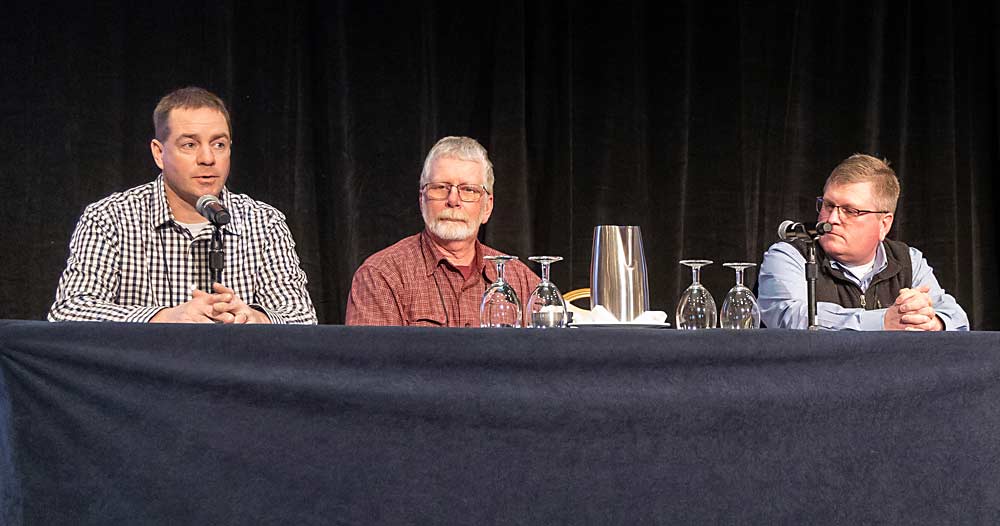
Fire blight hasn’t been a problem for Kropf, but it has been for Rennhack. He blames deer, which apparently love MAIA1. They chew on blighted trees, then move to other trees and spread the disease around. Rennhack now uses fencing to exclude deer from new plantings.
Another challenge: MAIA1’s stem is extremely stiff and brittle, and sometimes it will crack and break when the apple shifts on the tree. This results in some dropped apples, Rennhack said.
The panelists admitted MAIA1 is not the prettiest apple. It doesn’t always color well, and even when it does, it’s often a dull, dark red.
To improve color, Kropf summer prunes and lays reflective fabric between rows. Rennhack has laid down reflective fabric in the past, but he hasn’t been able to stick with it because he has to harvest Honeycrisp at the same time.
“I think (EverCrisp’s) biggest hurdle is its eye appeal,” Rennhack said. “But once you get people to try it, most of them like it. You’ve just got to get it in people’s mouths.”
—by Matt Milkovich

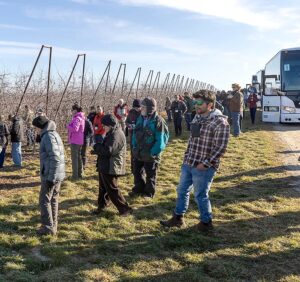
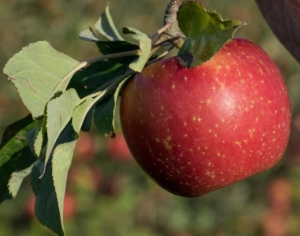
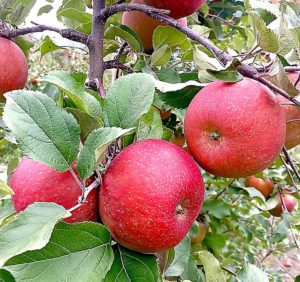





Leave A Comment